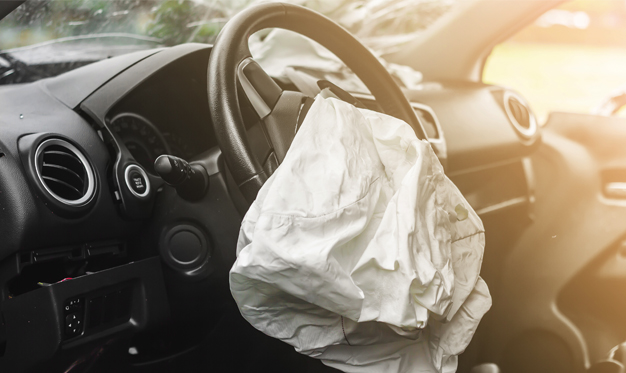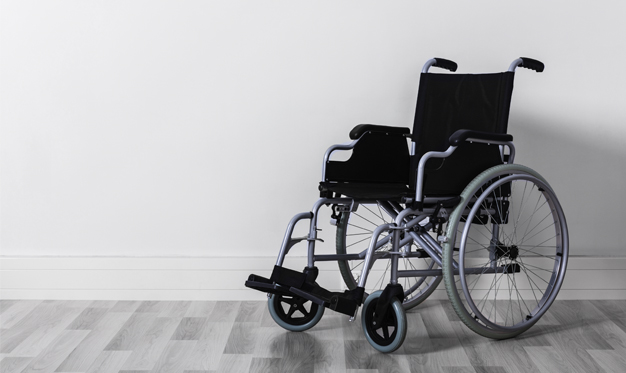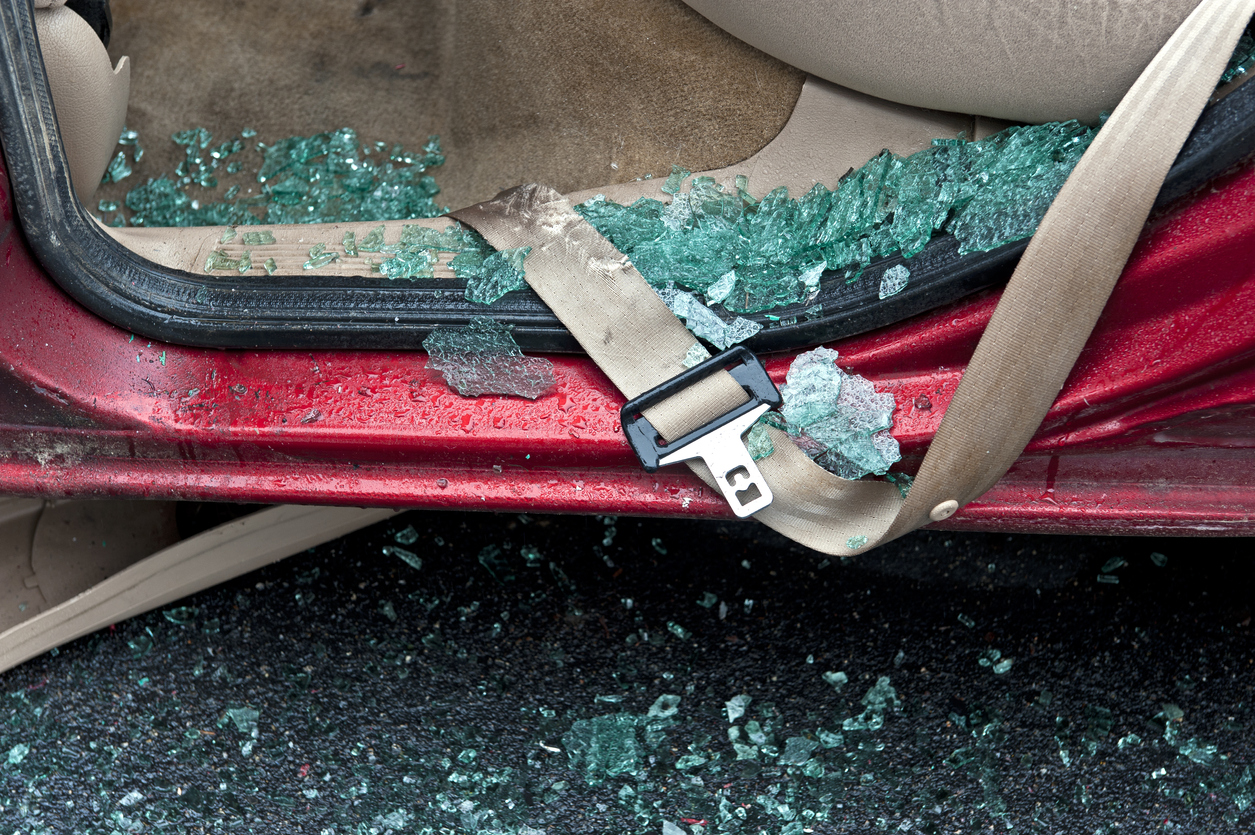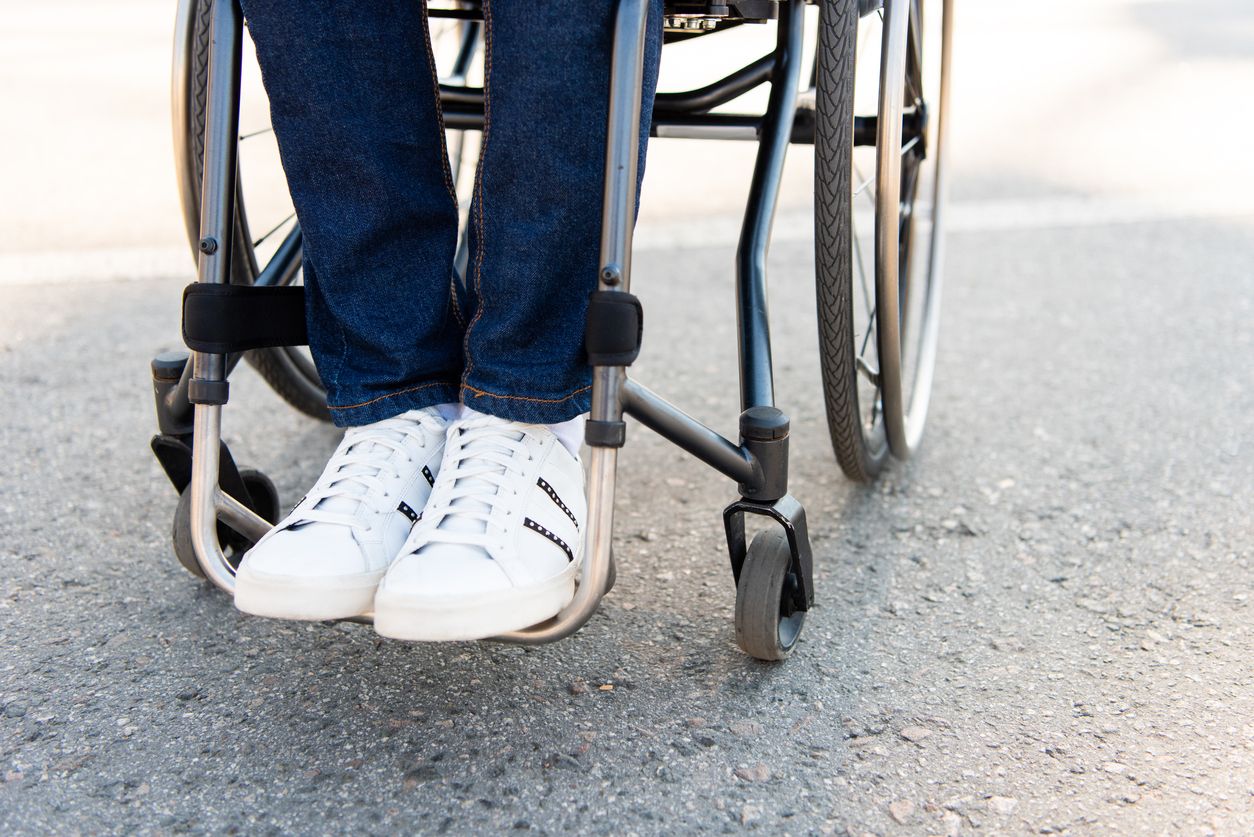Business valuation concepts can be critical for the proper quantification of personal injury damages, particularly in the context of self-employed individuals.
Business valuators are commonly called upon to assess the fair market value of small, owner-managed businesses. One of the key elements to such engagements consists of distinguishing the business’s return on its assets from the return on the business owner’s labour. Investors are rightfully presumed to be willing to pay for only the former, since it is only the business’s assets that are being sold. In addition, business valuators will often need to differentiate between commercially saleable goodwill and personal, non-transferable goodwill [1]. Finally, business valuators will determine the appropriate discount rate to be applied to the stream of profits that derive from a business’ assets and goodwill to determine value.
As this article will demonstrate, these concepts should be no less critical when it comes to properly quantifying personal injury damages for self-employed business owners. Yet in practice, they are often ignored, resulting in incorrect damage assessments.
Returns to Labour and Capital
Self-employed business owners [2] generate their income from a combination of their own human capital and the business’s tangible and intangible assets. When evaluating personal injury claims involving self-employed individuals, it is normally the case that only the former element is affected by the injury (see below for a discussion of some exceptions). As one leading author has commented:
“It may be necessary to analyze an enterprise in terms of “return from labour”, “return from management” [3] and “return from capital”. The last will usually be unaffected by personal injury, unless the loss of careful investment decision-making is somehow connected to the injury…The “return from labour” component of self-employment is where the loss will mostly fall.” [4]
It is thus critical to examine the plaintiff’s earning history from his or her self-employment, and to isolate or break down each element of his or her historical income.
There are three main methods by which this can be accomplished. These are as follows: [5]
- The opportunity cost method
This involves estimating the value of the owner/manager’s labour based on the average earnings of individuals involved in that occupation. Data on average earnings can be accessed from various sources, such Statistics Canada’s Census data. For example, the average employment income for managers in the restaurant and foodservice industries (NOCS A221) in Ontario is approximately $40,000 in 2012 dollars.
- The replacement cost method
This method involves measuring the actual increase in labour expense incurred by the business following the injury to the owner.
- The indirect method
This involves first estimating a “normal” required rate of return on invested capital, identical to the rate of return that would be used in a business valuation. Note, however, that the rate of return to be used here is not an industry-average weighted average cost of capital. Rather, it should be the required rate of return on the company’s tangible assets. This return is subtracted from the business’s normalized historical earnings, with the residual representing the estimated return on labour.
Each of these methods comes with its strengths and weaknesses.
The opportunity cost method is ideal for occupations in which the labour supply is relatively homogenous, each worker roughly similar in skill and productivity to the next. In occupations in which significant differences in skill, or wide dispersions in wage levels, are present, this method may be of limited applicability.
The replacement cost method can, of course, only be used in situations in which a replacement worker has actually been hired. When a replacement worker has been hired, this method is generally superior to the opportunity cost method. However, it may not always be easy to identify which workers have been hired to replace the services of the injured owner/manager, as payroll increases may be due to other, non-injury related factors (such as increased sales volumes or other changes in the business’ structure).
Finally, the indirect method is most useful in situations in which the value of the labour is difficult to measure directly due to the specialized nature of the labour; the injured plaintiff may have unique skills that allow him to earn higher profits than the typical business. The drawback of this method is that it fails to distinguish between those returns that are due to the value of his or her personal goodwill and those that are due to the existence of commercial goodwill of the business. This issue is discussed more fully in the next section.
The three methods will tend to generate different results, and it will be important to reconcile between them. Consider, for example, an individual who owns a restaurant who is injured in a slip-and-fall. Prior to the accident, the restaurant had $500,000 in net assets, and earned $160,000 per year in pre-tax net income, prior to paying out anything to the owner of the business. Following the accident, the restaurant increased the duties of two of its employees, who took on the management of the restaurant in exchange for annual raises of $15,000 each. The annual losses to the restaurant owner under the three methods are:
- Opportunity cost – $40,000 (based on the average salary for managers in the foodservice and accommodation industries);
- Replacement cost – $15,000 x 2 = $30,000;
- Indirect method – $160,000 – ($500,000 x say, 8%[6]) = $120,000.
The higher result under the indirect method may indicate the presence of some type of goodwill (see below); the fact that the replacement cost method yielded a lower figure is indicative of the restaurant’s ability to efficiently cover the labour shortfall by slightly increasing the duties of two existing employees rather than hiring a separate, more highly skilled individual.
Goodwill
In addition to the two contributory elements of labour and capital, there is a third element that represents the ability of a business to generate profits in excess of the normal required return on invested capital and labour. This component, known as “goodwill”, can be due to a variety of factors. The key, from the perspective of an analyst assessing personal injury losses, is to establish whether this goodwill relates to the personal qualities of the business’ injured owner/manager, in which event it will also likely be lost as a result of the owner’s injuries; or whether it relates to some other, more transferrable aspect of the business (e.g. its desirable location, the reputation of its products, etc.) that is more likely to remain unimpacted by the owner’s injuries.
The question of the existence of goodwill in the plaintiff’s business is critical. The loss of the owner/manager’s labour will typically impact the business’s results in the form of increased labour expenses. The loss of individual goodwill – unrivalled managerial skills¸ a unique ability to maintain customer loyalty, or other attributes of the owner/manager that give his or her business a “competitive edge” – will, by contrast, often have an impact on the firm’s top line. If the plaintiff will be claiming a loss of sales as a result of his or her injuries, it will be important to establish that the business possessed goodwill.
Let us return to our previous example. We noted that, prior to the accident, it appears that the restaurant was generating excess returns of approximately $80,000 to $90,000 (that being the difference between the total excess returns calculated under the indirect method and the value of the owner/manager’s labour of either $30,000 (replacement cost) or $40,000 (opportunity cost). To what can one attribute the excess returns? If they are due to a superior location, for instance, then one would expect that there would be no impact on the business’ top line as a result of the owner’s injuries. Conversely, if the excess returns are due to the specific skills of the owner – her unique ability to negotiate with suppliers, her aptitude with developing new dishes, etc. – then there may be an additional loss of revenue as a result of the accident.
Loss of Return on Capital
To this point, we have assumed that in the event of an injury to the business owner, no loss would occur with respect to the business’ return on capital, as the business should be able to sell its assets within a reasonable period of time. Similarly, we have assumed that any non-personal, commercially transferrable goodwill would not be impacted by the injuries.
In some instances, however, an individual’s injuries may prevent him or her from making proper use of tangible assets and/or commercial goodwill. Below, we discuss several such scenarios:
- Temporary closure of business leads to permanent loss of goodwill
In some instances, the injuries to the plaintiff may be so severe that they result in the plaintiff being unable to transition the business to a new owner. If the business is closed for several months as a result of the plaintiff’s injuries, customers may move their accounts elsewhere. This may result in a permanent loss of the business’s commercially transferrable goodwill.
- Delayed or forced sale of assets
A failure to properly transition may also result in the failure to achieve an appropriate return on assets in the short term. If, for instance, the assets of the business cannot be sold for a number of months while the plaintiff arranges his or her affairs or attempts to recover, the assets will fail to earn a sufficient return during that period.
Alternatively, the business owner may be forced into selling the business at a reduced price as a result of financial distress.
Discount rate
Another reason it is important to break out the historical income of an owner-managed business into its three components of: a) return on capital, b) return on labour, and c) excess returns, or goodwill, is that it will be appropriate to discount the lost excess returns (as well as any loss of return on capital) by a much different rate than that used to discount the lost return on labour.
In many provinces in Canada there are legislative guidelines that spell out the discount rate to be used in converting future losses of income into a present value lump sum. For example, in Ontario Rule 53.09 of the Rules of Civil Procedure states that:
“53.09 The discount rate to be used in determining the amount of an award in respect of future pecuniary damages, to the extent that it reflects the difference between estimated investment and price inflation rates,[7] is:
a) for the 15-year period that follows the start of the trial, the average of the value for the last Wednesday in each month of the real rate of interest on long-term Government of Canada real return bonds (Series V121808, formerly Series B113911), as published in the Bank of Canada Weekly Financial Statistics for the 12 months ending on August 31 in the year before the year in which the trial begins, less 1 per cent and rounded to the nearest ¼ per cent; and
b) for any later period covered by the award, 2.5 per cent per year.[8]”
The rate stipulated is thus a real risk-free rate;[9] this is predicated on the idea that the value of human labour is relatively riskless. Aside from the contingencies of mortality and unemployment which are typically added to the discount rate, it is normally assumed that, but for the personal injury, the plaintiff would not suddenly lose his or her capacity to labour. We would argue that the same rationale would apply to personal goodwill, and that lost returns to personal goodwill should be discounted at the risk-free rate as well.
But what if the claim for future income loss includes a portion relating to lost returns on either tangible assets or commercial goodwill? It seems clear that these profits should be discounted at a higher rate than the risk free rate; instead, they should be discounted at the weighted average cost of capital of the business.[10]
Let us return to our previous example of the restaurant owner. Above, we broke down the $160,000 in net income available to the owner/manager of the restaurant into:
- Return on tangible assets – $40,000
- Return on labour – $40,000
- Excess return – $80,000.
Assume the owner is injured in an accident, and is no longer able to be involved in the operation of the restaurant; he is instead forced to devolve management of the restaurant to two other employees. These employees do not possess the unique culinary talents of the owner, and income declines by approximately $80,000 per year. At the end of two years, the owner sells the restaurant for $500,000 (i.e. its net book value).
The owner’s losses consist, therefore, of two income streams. The lost return on labour – $120,000 per year, consisting of both the return on “normal” labour as well as the return on personal goodwill – is discounted at the risk-free rate until the owner’s expected retirement age, say 65 (or alternatively until he is able to return to work). There is no loss, however, on the tangible assets, which continued to generate income before being sold at market value.[11] Assume that the Net Present Value (“NPV”) Factor, based on a risk-free rate, is 20x. The owner’s losses will therefore be:
($80,000 + $40,000) x 20 = $2.4M
It would be incorrect, however, to take the full $160,000 in annual profits, apply the NPV factor of 20x, and then deduct the proceeds of $500,000 on the sale of the restaurant – such an approach would overstate the loss by $300,000, as shown below:
$160,000 x 20 – $500,000 = $2.7M
Failure to consider this basic distinction between returns on labour, returns on tangible assets, and excess earnings can result in damage calculations that border on the absurd. Consider an actual case in which I was involved several years ago. The plaintiff operated a hardware store, and was in the early stages of purchasing a second such store when, unfortunately, he was involved in an accident that left him partially disabled.
As a result of these injuries, the plaintiff alleged that he was unable to work at his pre-accident capacity and was forced to hire a replacement worker. In addition, however, the plaintiff alleged that the incident resulted in a delay in completing the deal for the new store, as a result of which it fell through. The plaintiff’s expert calculated damages by projecting the forecasted profits of the new store and discounting them at the risk free rate; he also calculated the anticipated selling price of the new store upon the plaintiff’s anticipated retirement at age 65, and netted this amount against the original planned purchase price of the store.
Absent any clear evidence that the plaintiff would have been able to generate profits from the proposed new store in excess of his required return on investment, there is no reason to believe that the new store would have been anything other than a zero-NPV investment. By discounting the projected income of the store at the risk-free rate, the plaintiff’s expert significantly overstated the loss.
Earning Capacity and Loss of Earnings
Distinguishing between capital and labour can also be an important consideration when it comes to evaluating personal injury claims of self-employed workers whose businesses are not profitable.
Many small businesses do not generate a sufficient return on their capital and labour. That is to say, from a purely financial perspective, the owners of these businesses would be better off liquidating their assets and finding employment than continuing to operate their businesses.
Consider a restaurant that earns net income after taxes of $20,000 per year. The owner does not pay himself a salary, and invested capital is $400,000.
How are the plaintiffs’ losses to be calculated, when clearly the restaurant is not earning a sufficient return on its capital, let alone the owner’s labour? Is the fact that the restaurant has not historically earned an acceptable return on capital and labour relevant to an evaluation of the “capital asset” that is the plaintiff’s ability to labour as a restaurant manager?
In situations such as this, it may be appropriate to invoke the distinction between loss of earnings and loss of “earning capacity”. There may be no evidence that the plaintiff was considering selling his underperforming restaurant and pursuing employment as a restaurant manager that would yield him an appropriate return on his labour; however, it is equally clear that the historical earnings of the restaurant do not reflect the value of this individual’s “capital asset”.
This is a subject that Canadian courts have touched upon in several decisions. In Meehan v. Holt, the Alberta Court of Queen’s Bench noted that upon opening a new chiropractic practice several years following her accident, the plaintiff’s level of activity fell below her previously established post accident capacity; it therefore ruled that there was no future loss of income, as the patient flow at the plaintiff’s new business was too low to make any of her physical limitations relevant. However, the Court granted an award for loss of earning capacity, on the grounds that the plaintiff was “rendered less capable overall from earning income”, and that she was less “marketable to potential employers… The plaintiff lost the ability to take advantage of all job opportunities which might otherwise have been open to him or her”.
In Rowe v. Bobell, the British Columbia Court of Appeal also offered some interesting comments in this regard. The case involved an individual who operated a seasonal guest ranch in the name of a corporation. As part of estate planning, the company’s affairs were arranged so that the plaintiff’s equity in the company was converted to debt, and the company made annual payments to him of $26,250, recorded as repayment of the debt. As a result of the accident, the plaintiff was no longer able to operate the ranch; as a result, the company started to suffer losses and was unable to continue to make the payments to the plaintiff.
The court established the plaintiff’s damages as the $26,250 in “debt” repayments that would have been made to him each year. In her additional comments to the decision, Southin J.A briefly addressed a broader theoretical issue:
46 In the case at bar, the respondent was doing something he enjoyed at a time when money was to him of little consequence. The economic value of his time and talent obviously far exceeded $25,000.00 per year.
47 Suppose a comparatively young man or woman with a private income who devotes his or her considerable time and talents without remuneration to charitable endeavours is so severely injured as to no longer be able to do so?
48 Is it open to the tortfeasor to say to the plaintiff, “You have suffered and will suffer no financial loss. The loss is that of the charities for whom you worked and would have continued to work and therefore you are limited to non-pecuniary damages which are subject to the ‘cap'”?
49 I shall not essay an answer to this question, which has implications for all those who use their time doing useful things in the community for no pay. Others will have to answer it should it arise.
The question raised by Southin, J.A., phrased otherwise, is precisely that which we posed above: To what extent does the actual historical income stream of an individual impact on an award for loss of income/earning capacity, if it can clearly be established that this historical stream bears no relation to the value of this individual in the marketplace?
Conclusion
Self-employed individuals earn income from a number of different types of assets. The returns on these assets will be unequally impacted by a personal injury. While the business owner’s capacity to labour will clearly be impacted, the impact of the injury on the business’s return on its tangible assets and goodwill may be negligible. Even when the returns on these other assets are affected, a much different discount factor will need to be used in discounting these losses. Failure to consider these issues can result in inappropriate economic loss calculations.
By Ephraim Stulberg. Published in the Journal of Business Valuation (2013).
The statements or comments contained within this article are based on the author’s own knowledge and experience and do not necessarily represent those of the firm, other partners, our clients, or other business partners.
We define goodwill as the business’ ability to generate profits in excess of the firm’s required return on invested capital and owner’s labour.
Personal goodwill is defined as the unique advantage enjoyed by a given individual which arises from his or her particular abilities, good name and reputation, and which is not transferable.
By this term, we refer to individuals who own and operate their own businesses, and whose earnings depend to a significant degree (though not completely) on both their active labour in, and management of, the business. Such businesses will tend to be relatively small.
While it is possible that a larger business in which the owner’s labour plays a less significant role would also be impacted by a personal injury, such instances are the exception; in fact, many US jurisdictions have specifically barred such claims. See for example George A Schieren and Gary R. Albrecht, “Assessing Economic Damages in Personal Injury and Wrongful Death Litigation: The State of North Carolina”, Journal of Forensic Economics, 19(1), pp. 89-101.
This refers to the ability of the business owner to extract superior returns from the business’s assets, in excess of those of a less skilled manager; such excess returns represent the personal goodwill of the business owner. See below.
K. Cooper-Stephenson, Personal Injury Damages in Canada, 2nd ed., p. 152.
We have adopted the terminology used by J. Thomas Romans and Frederick G. Floss, “Measuring Economic Loss for the Self-Employed: The Role of Economic Rents”, Journal of Legal Economics, 7:1 (1997-1998).
Determining the appropriate rate is a somewhat thorny issue. For one approach, see Harry Howe, Eric E. Lewis, and Jeffrey Lippitt, “Estimating Capitalization Rates for the Excess Earnings Method Using Publicly Traded Comparables”, Journal of Business Valuation and Economic Loss Analysis. Volume 2, Issue 1 (2007).
In practice, it is common to simply use the firm’s pre-tax cost of debt.
Emphasis added.
The background to Ontario’s fixed discount rate is lengthy, and has been briefly described by this author elsewhere – see Ephraim Stulberg and Matthew Mulholland, ”Clarity Needed on Discount Rate”, Law Times, August 15 2011. What is important to note is that the idea behind fixing the rule was to avoid arguments over:
a) The real risk-free rate; and,
b) Whether any adjustments for productivity should be made.
There does not appear to have been any suggestion that the risk-free rate should be applied to lost income from either tangible business assets or goodwill.
Actually, it is 1% lower than the real risk-free rate.
On the selection of the appropriate discount rate for calculating the present value of lost profits, see James E. Meyer, Patrick Fitzgerald and Mostafa Moini, “Loss of Business Profits, Risk, and the Appropriate Discount Rate”, Journal of Legal Economics (1994).
In fact, the lost excess returns, or goodwill, will be equal to the value of the business as a whole less the value of the fixed assets.


































